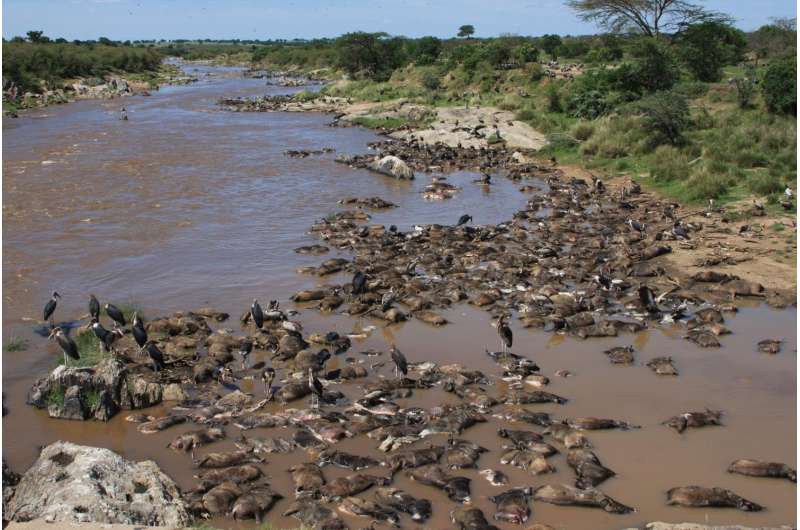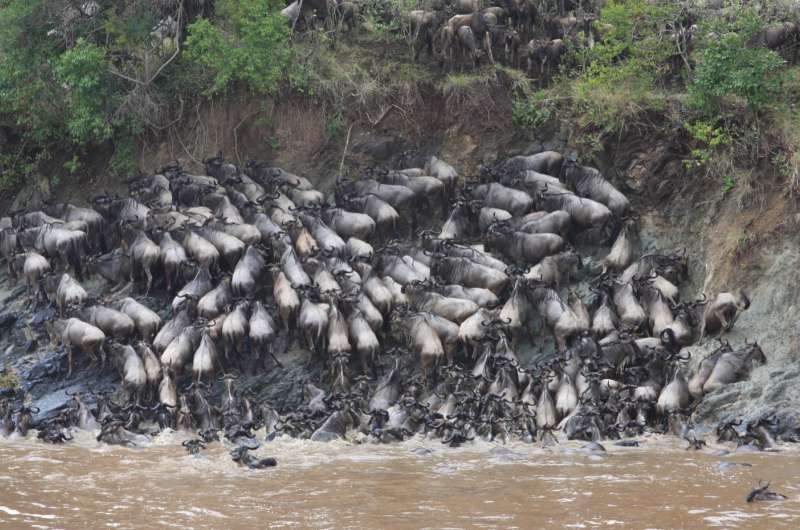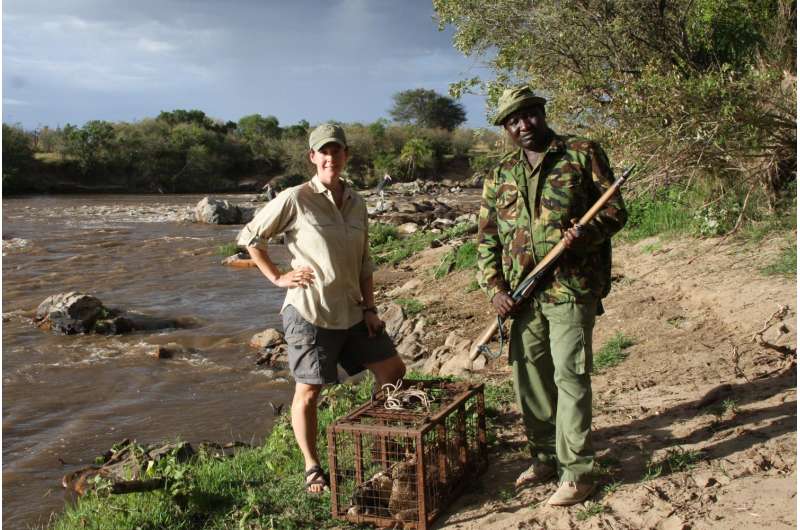Wildebeest feast: Mass drownings fuel the Mara River ecosystem

(Millbrook, NY) Each year, more than a million wildebeest migrate through Africa's Serengeti Mara Ecosystem. While crossing the Kenyan reach of the Mara River, thousands perish. A new study, published today in the Proceedings of the National Academy of Sciences, is the first to reveal how wildebeest drownings impact the ecology of the iconic river.
Amanda Subalusky, a Postdoctoral Associate at the Cary Institute of Ecosystem Studies, is the paper's lead author. She conducted the work while a graduate student at Yale University. Subalusky explains, "The Mara River intersects one of the largest overland migrations in the world. During peak migration, the wildebeest cross the Mara River multiple times, sometimes resulting in drownings of hundreds or thousands of wildebeest. Our study is the first to quantify these mass drownings and study how they impact river life."
The research team conducted five years of field surveys and analyzed a decade of historical reports from the Mara Conservancy to determine the rate and frequency of wildebeest drownings in the Mara River's Kenyan reach. On average, 6,200 wildebeest - representing 1,100 tons of biomass - succumb each year during migration, with mass drownings occurring in 13 of the last 15 years (2001-2015).
Co-author Emma Rosi, an aquatic ecologist at the Cary Institute, notes, "To put this in perspective, it's the equivalent of adding ten blue whale carcasses to the moderately-sized Mara River each year. This dramatic subsidy delivers terrestrial nitrogen, phosphorus, and carbon to the river's food web. First, fish and scavengers feast on soft tissues, then wildebeest bones slowly release nutrients into the system - feeding algae and influencing the food web on decadal scales."

To reveal the fate of wildebeest carcasses, the researchers modeled in-stream consumption by fish and Nile crocodiles, scavenging by birds, nutrient uptake, and downstream transport. Stable isotope analyses of common fishes, camera monitoring of scavengers, and stable isotope analyses of biofilms (a mix of bacteria, fungi, and algae) on wildebeest bones all informed the fate of wildebeest nutrient inputs.
While wildebeest soft tissue decomposes in 2-10 weeks, their bones persist for upwards of seven years, acting as a long-term source of phosphorus. Rosi explains, "Mass drownings present a striking picture. Rotting animal flesh spikes the aquatic ecosystem with nutrients. But once carcasses disappear, bones - which make up nearly half of biomass inputs - continue to feed the river."
When wildebeest carcasses were present, they comprised 34-50% of the diet of common fish. The most frequent terrestrial scavengers on carcasses were Marabou storks, white-backed vultures, Rüppell's vultures, and hooded vultures, consuming 6-9% of soft tissues. Biofilms on wildebeest bones had a distinct isotopic signature, and made up 7-24% of the diet of three common fish species months after drowning events. Due to low metabolic rates, Nile crocodiles were estimated to eat just 2% of total carcass inputs.

Co-author David Post, an aquatic ecologist at Yale University, comments, "The Mara River is one of the last places on Earth left to study how the drowning of large migratory animals influences aquatic ecosystems. Many migratory herds, like bison, quagga, and springbok have been driven to extinction or remnant populations."
With Subalusky adding, "The wildebeest migration is currently underway in the Mara, having arrived early this year. What is happening there is window into the past, when large migratory herds were free to roam the landscape, and drownings likely played an important role in rivers throughout the world."
More information: Amanda L. Subalusky el al., "Annual mass drownings of the Serengeti wildebeest migration influence nutrient cycling and storage in the Mara River," PNAS (2017). www.pnas.org/cgi/doi/10.1073/pnas.1614778114
Journal information: Proceedings of the National Academy of Sciences
Provided by Cary Institute of Ecosystem Studies



















